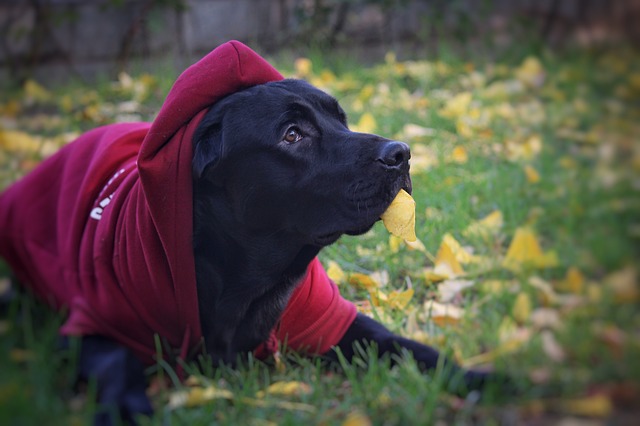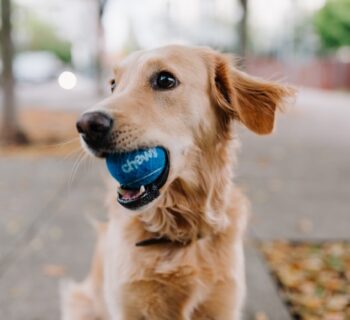Just like us, our furry friends can suffer from anxiety, and they usually exhibit this in many forms. Most anxious dogs may manifest symptoms such as licking, pacing, shaking, panting, or loss of appetite. Like in humans, when anxiety is left untreated, it can promote diseases and lower the dog’s quality of life. Thankfully, we can prevent all of that with some proven helpful remedies.
However, while these remedies have been shown to be effective for calming dog anxiety, the one you decide on will depend on your dog’s trigger. Now, anxiety triggers can vary depending on the dog. Below, we’ll look at some common dog anxiety triggers and how you can help as their human.
Common Causes of Anxiety in Dogs
Separation anxiety
Dogs are like babies. They grow attached to you as their human and parent. It's only normal for them to worry that you'll never return when you go out. But you can teach them that this isn't the case. Gradually help them understand that you'll always return. How can you do this?
Pretend as if you'll be leaving for a while, leave them inside and then depart for just 1 minute. A few hours later, leave for 5 minutes, and then return. Repeat but this time, stay out for 10 minutes. Gradually build up the duration each day for some weeks until they're calm while you're away.
Meeting strangers
Many dogs become anxious the moment they first meet a “stranger.” This can cause them to bark and panic. If this triggers anxiety for your dog, curbing it is relatively easy. Arrange with some dog-loving friends to act like strangers. Instead of walking into the house with you, ask the “stranger” to first let your canine approach them, but with a treat or toy in hand as a reward.
Your dog should become comfortable around this “stranger” once it sees the treat. Next time, allow the human to make the approach. Repeat this process with as many friends as possible. With actual strangers, however, you want to limit your dog’s exposure until you’re able to condition a promising experience with new people.
Remove it from the source of anxiety.
For some dogs, the above may not be very effective around strangers. If a particular person or another animal is making it anxious, taking your dog to a separate room can help. If it’s fireworks or thunder causing the nervousness, close the blinds, turn up the music to mask the “threatening” sound or sight. If your pet needs to hide in a little safe corner like his crate, let him do it. You can even cover the crate with a light blanket to help reduce the frightening sound and create a feeling of safety.
Also, you can create a safe spot for your dog by leaving open the door away from the sound or simply crate-train it. When the latter is done, your dog will learn to see the crate as his fortress and run there in the event of a threat.
Past abuse
With canines, you want to be sure every aspect of your interaction with him is a positive experience. This is especially important if your dog’s anxiety originated from poor treatment by humans. The last thing an abused dog needs is dominance and training with punishment, so avoid it at all times. You don’t need a visit to the vet for this; dedicate time to training with lots of treats and love.

Other Solutions for Dog Anxiety
There are several non-drug ways you can treat your pet’s anxiety, and we outline some of them below.
Pheromone diffusers
Pheromones are natural chemical messengers emitted by a canine’s mother while nursing to reassure her puppies of their safety. Your dog may be an adult now, but pheromones still have the same effect on him. In pet stores, you can purchase the synthetic versions of this chemical, commonly known as Dog Appeasing Pheromones (DAPs). Using is easy; plug them into the wall or attach them to your dog’s collar during anxiety attacks. Your dog should feel calmer.
Mask your reactions
Pets look up to you in more than a few ways. You’re a member of his pack to your dog, and if he sees you anxious or fearful in unsettling situations, he adopts the same reaction. Try as much as you can to mask it. Gently take deep breaths, count, and exhale slowly.
Avoid shrieking every time there is a thunderstorm. If you do, your dog will associate thunderstorms with terror, and this will cause anxiety.
Meditate together
Several studies have proven that meditation can have lasting beneficial effects on anxiety. Just a few minutes of meditation sessions each day can positively influence your mood, behavior, and emotions by releasing feel-good hormones and lessening stress hormones.
Your dog can benefit too. Sit with him in a calm and comfortable area, bringing attention to your breath. During meditation, it’s easy for the mind to wander, acknowledge it and go back to breathing. There are several free guided meditation practices online that you can try with your canine or almost any other pet.
CBD oil
CBD is fast growing in popularity, not just for human use but also for the pet, because of its many benefits. Some of these benefits include managing pain, epilepsy, and arthritis.
Do you know what else it is beneficial for? Anxiety!
Our bodies have their cannabinoid receptors scattered throughout the central nervous system. So do our dogs! Their bodies contain endocannabinoids, and these connect with the receptors that activate the body’s natural ability to create serotonin. Serotonin is a natural mood stabilizer.
Research has shown that CBD increases this ability by interacting with the nervous system to soothe and calm anxiety. CBD can be an excellent option for situational anxiety because of how fast it works.
For instance, in a thunderstorm or a firework display, or even when you both need to head out in the car (some dogs are triggered by car motion), you can give her CBD oil 30 – 60 minutes before. This will help to calm her down. However, be sure to follow the dosing instructions on the bottle before administering.
Also, make sure you only get your CBD from a licensed dispenser to be certain of its true content. Some may contain more than the allowed amount of THC (0.3% or less); you want to calm your dog, not get it “high” 🙂
Lastly: Talk to your vet
Yes, it would help if you still had your vet’s opinion on measures to take. He may prescribe medication if required, but just a few of the above methods might be all you need most of the time.
So, tell us, ever tried any of the methods above for your dog’s anxiety? How did it work for him? Share in the comments. Know of any others who may benefit? Please share this article with them.
About the Author
Kirsten Heggarty
Kirsten created The Pet Handbook with the aim of sharing her knowledge about pets, pet food, healthy habits, and more. All of her advice is based on years of her own experience with her pets, and feedback that she has received from grateful readers about her tips. If you want to know more please read the About Me page.









